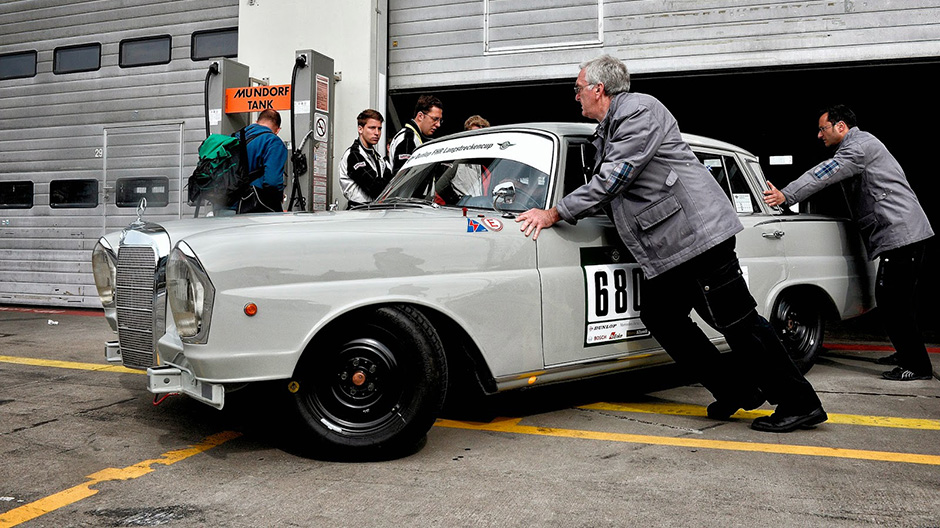
As promised in April of this year, Mercedes Classic in Fellbach has completed a 220SE Fintail prepared to the FIA’s International Sporting Code Appendix K. The light grey (DB 140) fin made its debut at the Nurburgring FHR contest the last weekend of October 2011.
Factory Fintail returns to the ‘Ring’
Appendix K competition 220SE
Mercedes Classic has made good on its word to compete in Europe’s popular European Historic Racing Association (FHR) motorsports events. The factory prepared fuel injected 220SE sedan debuted at the season finale at the Nurburgring in late October.
Fintails figured prominently in Mercedes racing exploits during the early to mid-’60s. Early rally successes set the stage for further competition development. Ungainly and generally overweight compared to it’s road racing rivals, fintails had great success in Europe, particularly the big three liter 300SEs handled by Dieter Glemser and Eugen Bohringer during the 1964 Touring Car Championship.
I commented in my April 21, 2011 article on this program that we were unlikely to see Mercedes Classic’s resident pilot Jochen Mass at the wheel of a fully prepared fintail. While Mass was not on board, 1998 FIA GT Champion Klaus Ludwig was at the wheel on a track he knows well. Partnering Ludwig was Brit Andrew Frankel, Senior Contributing Writer and road test expert for Motor Sport magazine. As the British are wont to say, Frankel is one lucky bloke.
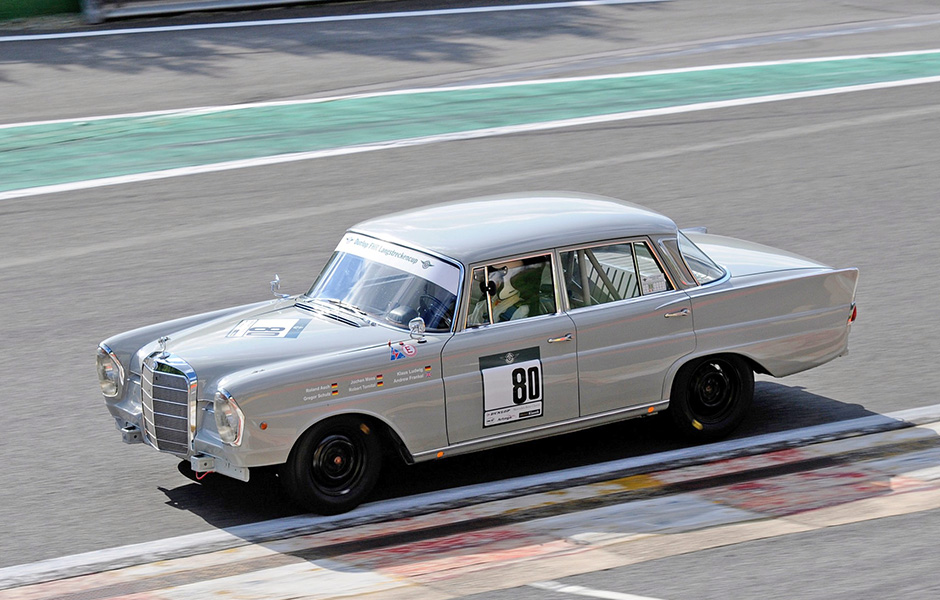
Anatomy of the racing Fintail
Tweaking the Factory 220SE with any substantial current technology would not only contravene the rules of FIA’s Appendix K but would destroy the point of the exercise: recreating a racing experience among cars that raced together in period. Hence Mercedes Classic did not create a 220 hp fin to steamroll the competition. Undoubtedly one of the finest competition fintails on the planet, this grey sedan employs current technology for driver safety only.
We see a contemporary racing seat fitted with state-of-the art harnesses, an on board fire system and a roll cage very likely designed on MB’s computers. The rest of the car is largely stock – much like when Fins raced in period – albeit constructed to exceptionally highest standards. Some specifications from Mercedes follow. The stated power output seems very low to me at 120hp. A well built 220SE motor using the Factory’s machining and porting capabilities should return at least 180hp. Perhaps the competition mind games have begun…
- Engine: six-cylinder (in-line)
- Bore x stroke: 80 x 72.8 mm
- Cubic capacity: 2195 cc
- Output: 120 bhp (88 kW) at 4800 rpm
- Maximum torque: 19.3 mkg (189 Nm) at 3900 rpm
- Front axle: double wishbone, coil springs, anti-roll bar, telescopic shock absorbers
- Power transmission: via propshaft on rear axle
- Rear axle: single-joint swing axle with compensating spring, coil springs, telescopic shock absorbers
- Brakes: hydraulic braking system with brake booster
- Front brakes: disk brakes, diameter: 253 mm
- Rear brakes: Duplex drum brakes with turbo-cooled Alfin drums, diameter: 230 mm
- Transmission: 4-speed manual transmission with floor shift
- Clutch: single-plate dry clutch
- Top speed: approx. 170 km/h
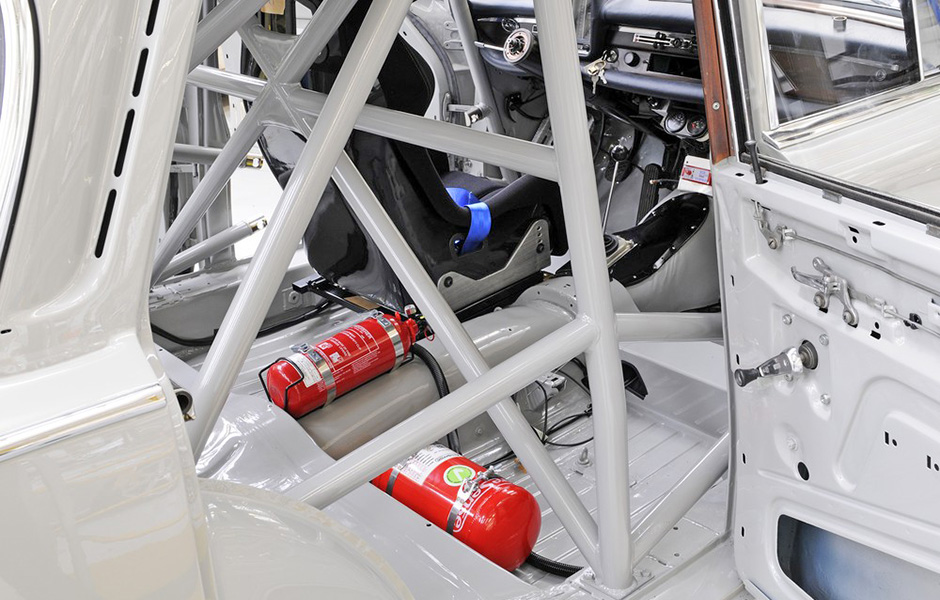
Spotless interior of new competition 220SE reveals on board fire system, triangulated roll cage and largely original dash layout complete with wood and pad. Note flawless cad plated inner door hardware.
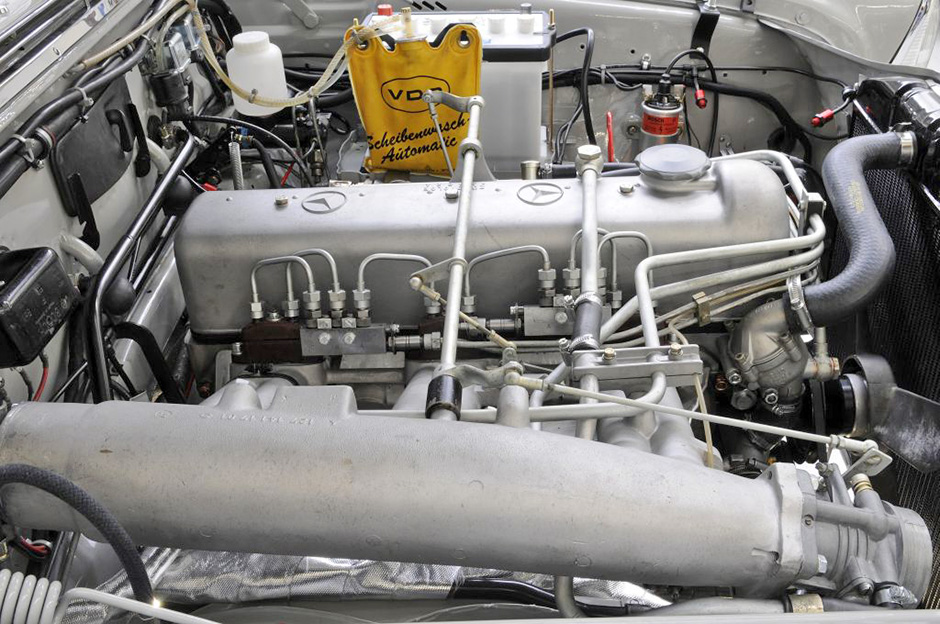
Engine bay appears as original right down to original VDO windshield washer bag. But make no mistake, this is one precisely assembled M 127 series injected 2.2 liter six.
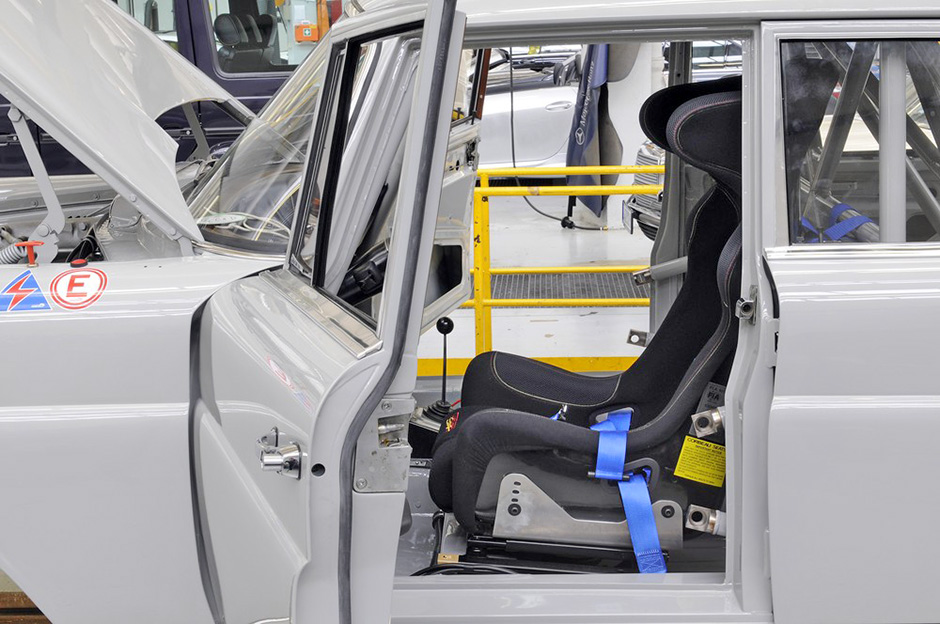
Driver comfort and safety is paramount today, even in the lower horsepower racing categories. Pilots Ludwig and Frankel enjoy a highly supportive racing seat, properly anchored state-of-the-art harnesses. Side impact roll cage bars have been removed. Note the two connector bars protruding from the lower B pillar area.
roy spencer/editor mercedesheritage.com
photograpy/daimler ag